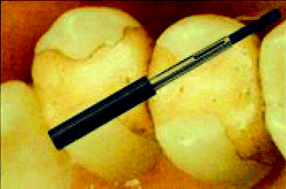Application of HS-SPME in the determination of potentially toxic organic compounds emitted from resin-based dental materials
Abstract
Leaching of volatile substances from resin-based dental materials may have a potential impact on the biocompatibility as well as safety of these materials. Information from manufacturers on ingredients in the materials is very often incomplete. Patients and dentists may be in contact with components emitted from cured dental fillings or from substrates applied in their preparation. Therefore, determination of the components of these materials is necessary for better prevention from possible harmful effects caused by dental fillings. The aim of this work was the isolation and identification of organic compounds evolved from four commercial resin-modified glass-ionomer cements (resin-based dental materials applied in dentistry) by using an alternative method of volatile compounds analysis—HS–SPME (headspace–solid phase microextraction). Dental materials were heated in closed vial at various temperatures and volatile substances released into the headspace phase above the sample were isolated on a thin polymeric fibre placed in SPME syringe. Identification was performed by using the GC-MS (gas chromatography-mass spectrometry) technique. Almost 50 RMGIC (resin-modified glass-ionomer cement) components (monomers and additives) were identified. The main identified leachables were: iodobenzene (DPICls—diphenyliodonium chloride degradation product), camphorquinone (photo-initiator), tert-butyl-p-hydroxyanisole (inhibitor), 4-(dimethylamino)ethyl benzoate (co-initiator), ethylene glycol dimethacrylate (monomer).


 Please wait while we load your content...
Please wait while we load your content...